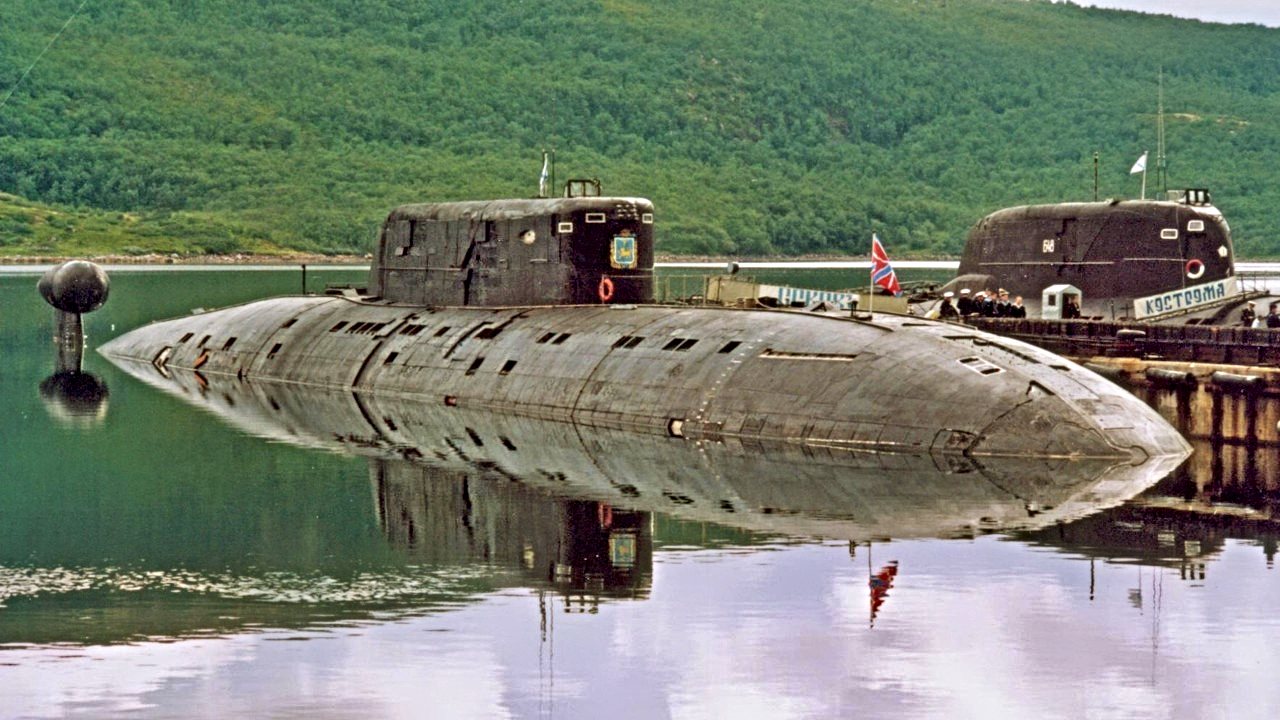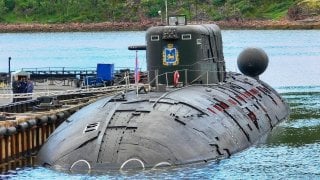Russia's Sierra-Class Titanium Submarine: The U.S. Navy Has Nothing Like It
The Sierra-class submarines, constructed with titanium hulls, showcase a significant technological advantage held by the Soviet Navy over its American counterparts.
Summary: The Sierra-class submarines, constructed with titanium hulls, showcase a significant technological advantage held by the Soviet Navy over its American counterparts. Introduced in 1987, these submarines possess greater maneuverability, speed, and deeper diving capabilities compared to steel submarines. Titanium's reduced magnetism also makes these subs harder to detect by standard Magnetic Anomaly Detectors, enhancing their stealth. Today, Russia maintains this edge with its continued operation of Sierra-class subs, exemplifying the strategic value of controlling critical materials like titanium and Rare Earth Metals. This scenario underscores the broader geopolitical race for technological supremacy, where China also plays a dominant role in the Rare Earth market, potentially shaping future military and technological landscapes.
Sierra-Class Submarines: How Soviet Titanium Technology Outpaces U.S. Naval Capabilities
Lightweight and durable, while packing quite a wallop, the old Soviet Navy’s Sierra-class submarine is remarkable for a variety of reasons. One of the main reasons, though, is that it is an all-titanium submarine. The Sierra-class ultimately had a greater diving depth than its American rivals at the time of its deployment in 1987.
There are three units in use today belonging to this class. In fact, one Sierra-class submarine conducted an intensive surveillance mission of the American East Coast back in 2012. These submarines have since been used in covert missions in the Barents Sea and the Baltic Sea, most notably during the Ukraine War which rages even today (and threatens to lead us into a third world war).
Sierra-Class Submarine: A Capability the Americans Lack
The United States Navy, meanwhile, has no titanium submarines.
In fact, if the US Navy wanted to build them, it could not. This is because, unlike the Russians, the United States lacked a sufficient, affordable cache of titanium that it can use for the construction of titanium-hull submarines. What’s more, because the Russians (and Soviets before them) had far greater experience building titanium-hull submarines, any American attempt to match the Russians with titanium-hulled submarines of their own would be counterproductive.
Being of a lighter material, the Sierra-class submarine was more maneuverable than other submarines. Further, the Sierra-class was able to move faster. These realities gave the Sierra-class submarines distinct advantages over their American rivals.
More importantly, in the titanium versus steel fight for submarine design, the titanium models win from an engineering perspective because of their durability. A titanium submarine can handle greater pressure, meaning they can operate longer at deeper depths than steel subs.
Most important (from a submarine-in-combat perspective), the titanium alloy is harder to detect by rival submersibles. Many submarines employ what’s known as a “Magnetic Anomaly Detector” as part of their offensive capabilities. Submarines employ this technology to help the crew identify potential enemy subs nearby. Steel has a magnetism that this machine can detect.
Titanium, on the other hand, has significantly reduced magnetism (paramagnetism) than does steel. Thus, one of the most important methods for American submarines to defend themselves from rival subs was negated.
Titanium is also temperature resistant and corrosion resistant. For a submarine operating in the extremes of the deep ocean, this conferred a significant capability and advantage to the Soviets (and now Russians) over their Western rivals. No matter what other advances the West makes, the Russians have an edge over them even today because of this titanium hull sub capability.
To match the speed and maneuverability of their titanium hull subs, the Russians equipped the Sierra-class with an impressive arsenal with which to threaten their American rivals. There were four 25.6 in (650mm) torpedo tubes. The Sierra sported an additional 21 in (533mm) torpedo tubes. Sierras had a minelaying function as well as anti-submarine warfare.
The USSR had a Titanium Advantage
Since the United States lacked enough titanium, the defense industrial base could not support the construction of these boats. The Soviets (and Russians today), however, had a larger amount of the material. Of course, Russia had its own serious limits on the metal. Still, they were able to gain an advantage over the Americans in this area because they had more of the product than did the Americans. The Sierra-class submarines were a significant threat to the US Navy that the West could not match.
What’s more, the engineering requirements for making titanium into a workable, reliable hull for submarines allowed for Soviet engineers to learn new methods that their Western counterparts, known for their technical skills, could not keep up with.
This was a point of pride among the Soviets. It remains so today, as the Americans still lack adequate supplies of titanium to make a titanium submarine that would be affordable. The Russians today are not building more of these titanium subs, but they still have the newer variant of their titanium submarines, the Sierra II-class operating in their Northern Fleet.
These subs still give NATO dyspepsia.
Today, China Controls More Rare Earths Than Does America
In the case of production materials, such as titanium, there is today a race among the three great powers (the United States, China, and Russia) for dominance of critical materials, notably Rare Earth Metals. Titanium is among those Rare Earth Metals. Russia is a commodities superpower and always has been (which is one reason they were even able to reliably build the Sierra-class submarines).
Since 2010, the Chinese government has made it their mission to capture as many Rare Earth deposits globally as they can—akin to staking out all the waterholes in a desert—and today possess an astonishing 85 percent of the world’s Rare Earth market and produces 60 percent of the Earth’s Rare Earths.

Using the Sierra-class submarine development as an example, and the Soviet access to titanium quantities larger than what the West had access to in the Cold War, the Americans are up a strategic creek without a paddle as the West is increasingly challenged by the growing Sino-Russian Eurasian alliance of autocrats.
In the Cold War, with just a little bit more titanium, the Soviets were able to build a submarine capability that the Americans were not able to directly match. Today, the Chinese dominate the bulk of the world’s Rare Earth market and they, along with Russia, could potentially develop radical new weapons systems that the Americans will have great difficulty matching over time.
The Sierra Example
The Sierra-class submarine should have been a wakeup call for America: never allow a critical commodity, like Rare Earth Metals, fall into the hands of an enemy. Sadly, Washington wasn’t paying attention. Not only do Russia’s titanium Sierra-class subs still threaten US Navy warships today. But now Russia’s partner, China, with its dominant position in Rare Earths, will likely be able to surprise America with new strategic systems the way that the Soviets surprised NATO with their Sierra-class subs.
About the Author
Brandon J. Weichert, a National Interest national security analyst, is a former Congressional staffer and geopolitical analyst who is a contributor at The Washington Times, the Asia Times, and The-Pipeline. He is the author of Winning Space: How America Remains a Superpower, Biohacked: China’s Race to Control Life, and The Shadow War: Iran’s Quest for Supremacy. His next book, A Disaster of Our Own Making: How the West Lost Ukraine, is due October 22 from Encounter Books. Weichert can be followed via Twitter @WeTheBrandon.


